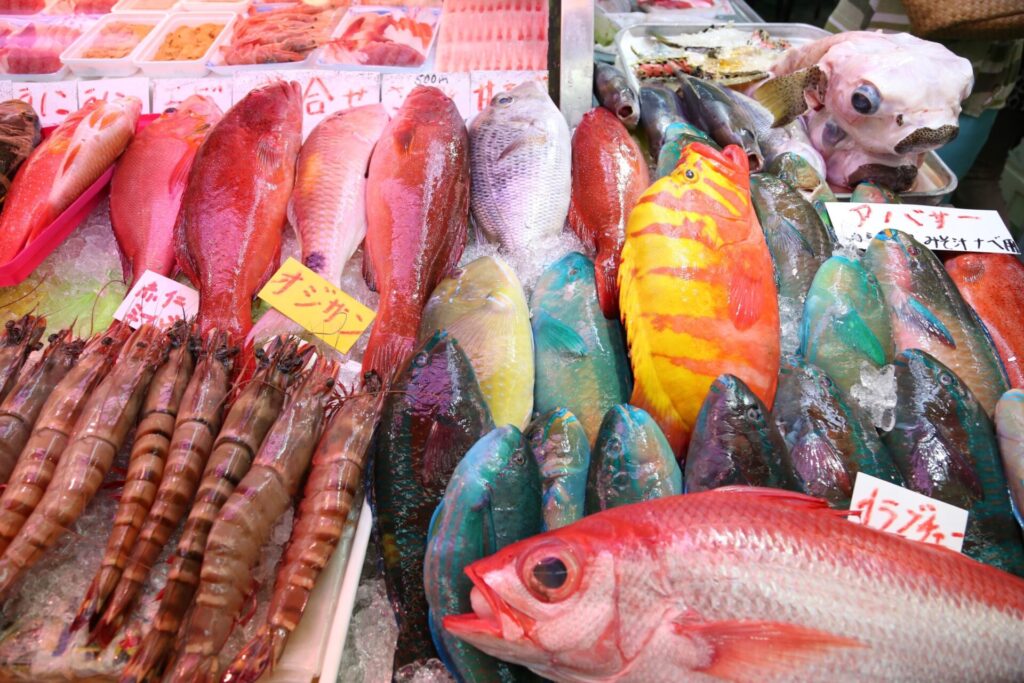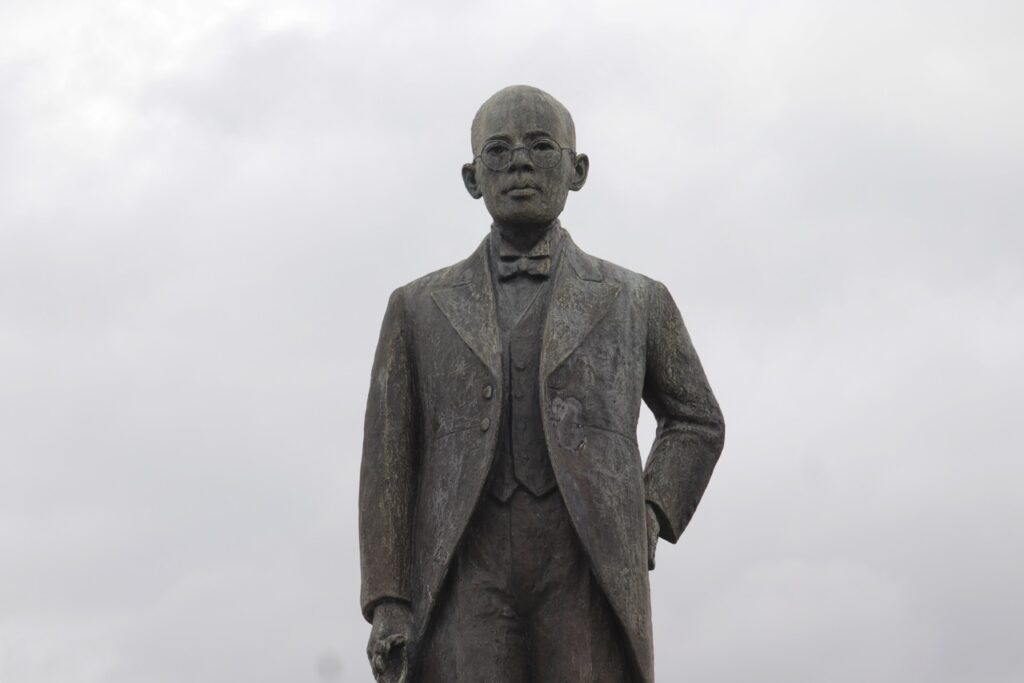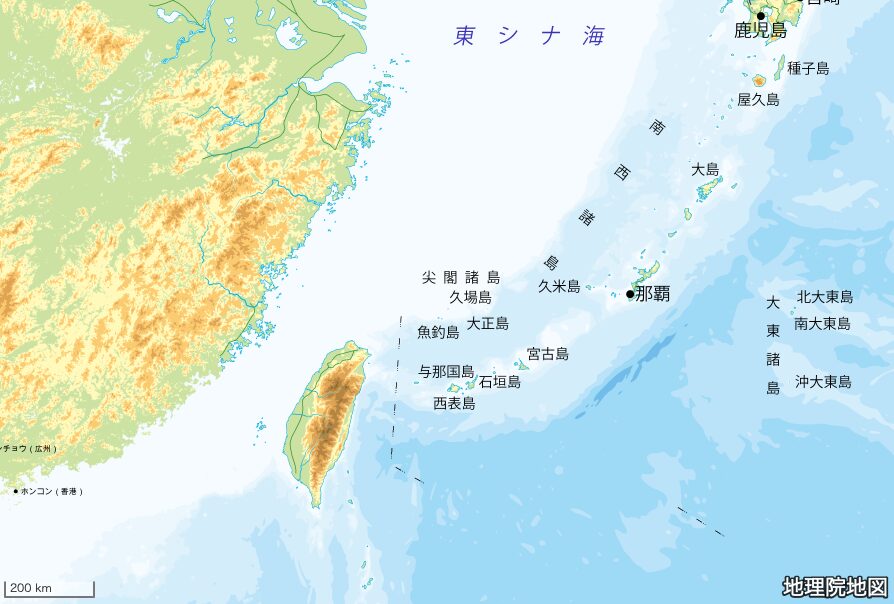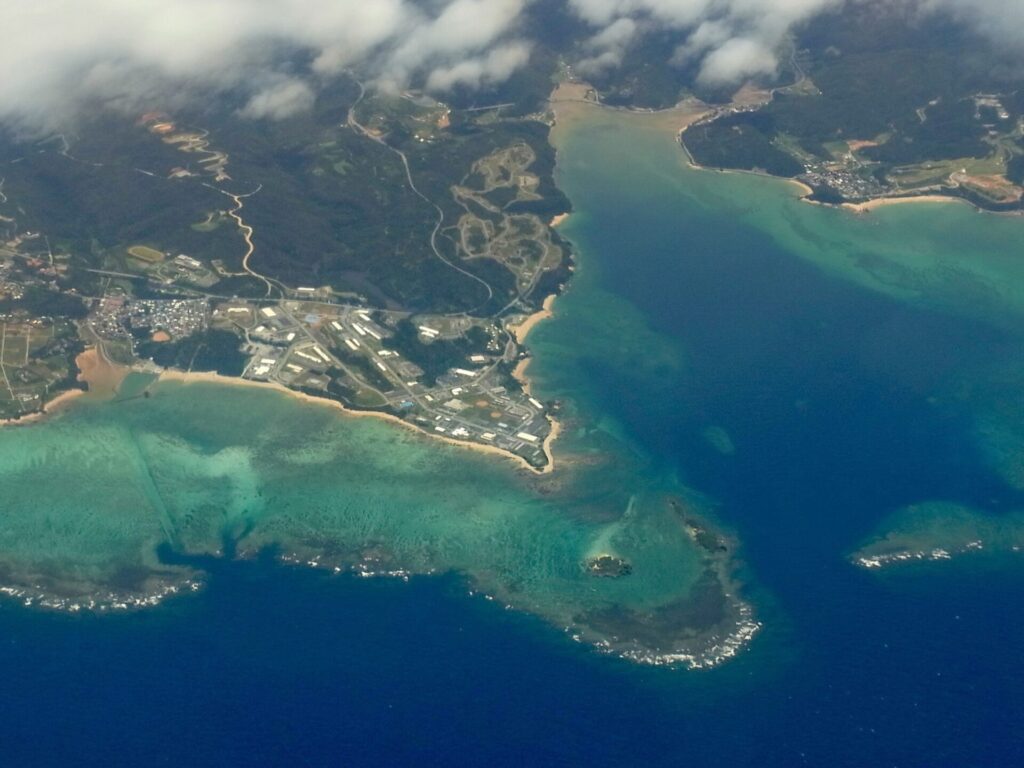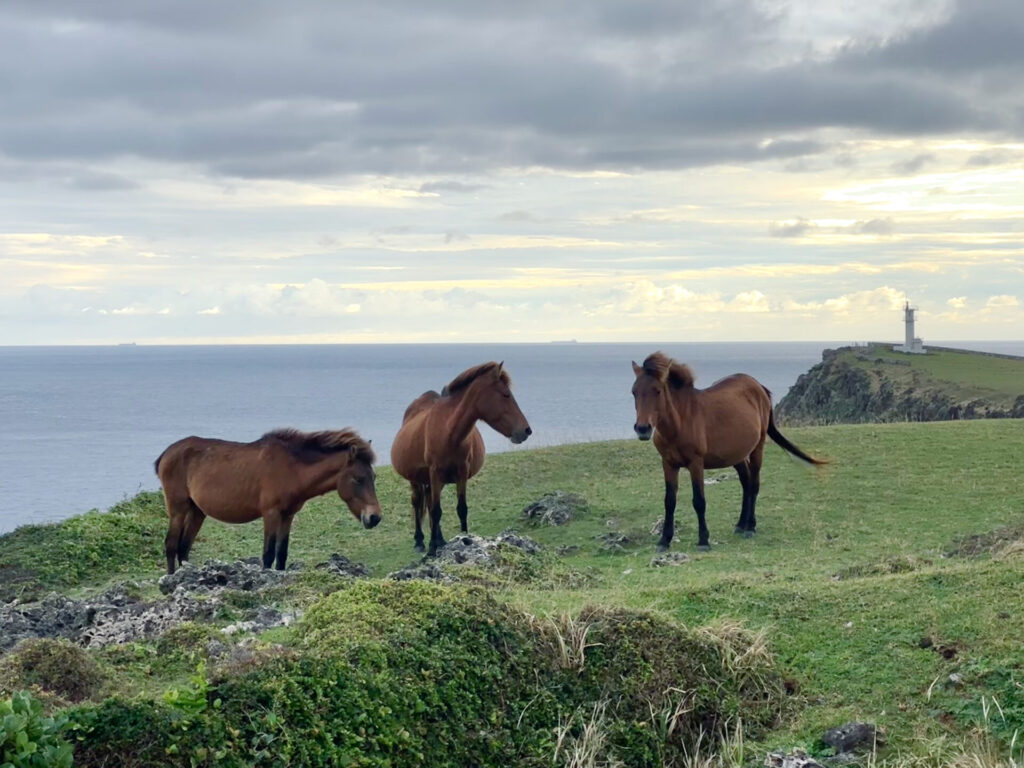Kibinago (Silver-stripe Round Herring)

Kibinago, the silver-stripe round herring, is called sururu in Okinawa. In Amami, it is known as suriin or yashi. Sururu belongs to the round herring family and the species caught in the region is minami-kibinago (spratelloides delicatulus). The fish are about ten centimeters long and characterized by a silver stripe running along their sides.
Sururu also appears in the popular Okinawan folk song “Tanchame,” which starts with a comical scene where a large school of sururu sweeps the beach. However, I’d like to put that aside for now and share some of the sururu fishing that I witnessed.
It was at Tatsugo Bay in the northern part of Amami Ōshima Island in June, around the beginning of the bonito fishing season. I was on a lure boat accompanying Hoseimaru, a 39-ton bonito fishing vessel from Okuma, Naze city. My boat departed the port of Okuma at 8pm with two other boats, which were also one-person boats weighing less than one ton.
The lure boats lowered their lights into the water and slowly moved around the bay. Back in the old days, fishermen would lure the fish by burning the inner core of pine tree trunks on the boat. This practice was later replaced by carbide lamps, battery-powered lamps, and then the present-day DC-powered lamps. Lured by the strong, 100V-1000W light, the school of kibinago gathered around the boat, creating a white swirl beneath the surface. Witnessing this for the first time, it looked like one incredibly long fish, but using a hydroscope revealed the great number of fish circling the boat.
Each lure boat was accompanied by a smaller boat also equipped with a lamp, to which the kibinago were drawn to.
After repeating the process three times, the scene became quite wild. The countless kibinago were frantically swimming around, trying to escape. Every once in a while, there were splashes at the edge of the swirl, made by horse mackerel trying to hunt the kibinago.
“It drives me crazy to see them devouring the kibinago that we gathered with such great effort. It makes me really want to throw them a stick of dynamite.”
Nishioka Tatsuo, the boatman, showed his frustration. But the only thing he could do was watch the gluttons stealing the fish. Numerous round herring were eaten by them or left the bay in order to escape.
However, the swirl became orderly again. “Here comes the savior,” Nishioka said and picked up his hydroscope in anticipation. “Yes, they are here,” Nishioka muttered with joy and relief.
The saviors were swordfish. I could see five or six slender silhouettes beneath the surface. The gluttons disappeared as they saw the swordfish approaching. There is always something stronger, I thought. Or it could be called the oceanic dispensation, I suppose.
“Thank you god, please keep the swordfish here for us…”
The boatman opened a bottle of shochu and poured it into the sea as he offered the prayer. The main vessel finally arrived at 2am and the kibinago were moved to its tank. “Those kibinago may seem to be born only to be eaten by other fish, but they lay eggs eight times a year, so they will never be completely gone,” said Nishioka. The words stayed with me for a long time.



























































